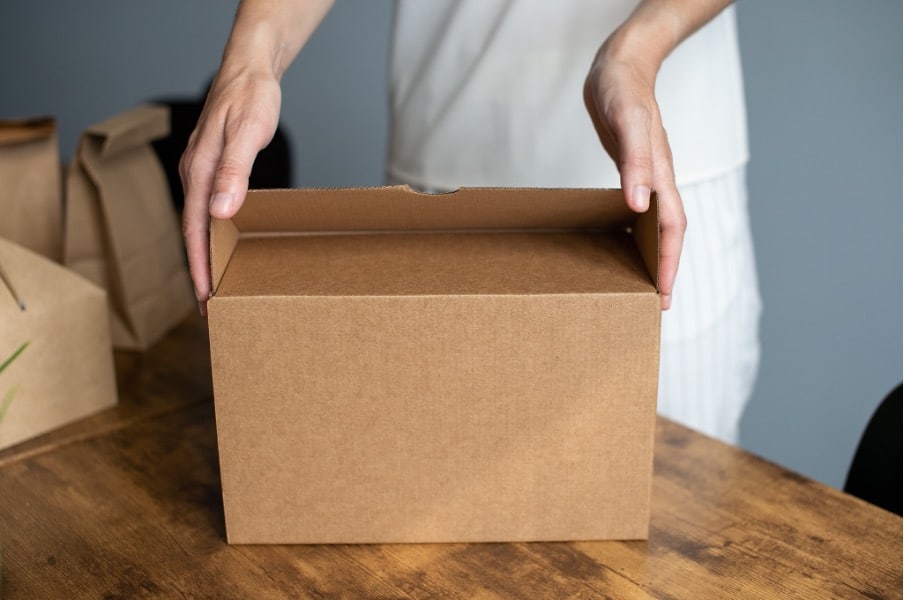Individual packaging: a practical solution or an environmental problem? In this article, we look at the pros and cons of single-serve packaging. While some see them as easier to use and more hygienic, others are concerned about their harmful impact on the environment. Discover the different points of view on this controversial subject.
Micro industry in africa details on PACKAGING MACHINE PRICES and LABELS
[arve url="https://www.youtube.com/embed/caY-0Lse48g "/]
What are the disadvantages of packaging?
Packaging have a number of drawbacks for our environment and society. Firstly, they generate a considerable amount of waste, particularly plastic packaging, which takes hundreds of years to decompose. This contributes to soil, ocean and air pollution.
What's more, packaging production requires the use of natural resources, such as oil for plastic packaging, which contributes to the depletion of non-renewable resources. This excessive exploitation of resources also leads to environmental degradation.
Packaging can also be a source of public health problems. Certain materials used in packaging, such as the chemicals present in plastics, can migrate into the food or beverages they contain. This can lead to health risks, including endocrine disruption and potential carcinogenic effects.
FinallyExcessive packaging is often criticized as a waste of resources. Many products are over-packaged, with multiple layers of plastic or cardboard which are then quickly discarded. This is not only detrimental to the environment, but also to the economy, as it represents an additional cost for businesses and consumers alike.
It is therefore essential to find sustainable, environmentally-friendly alternatives to traditional packaging. This can include using recyclable or compostable materials, reducing the amount of packaging used, or promoting responsible consumption patterns.
What are the advantages of packaging?
Packaging play an essential role in modern society. Here are just a few of the key benefits:
1. Product protection : Packaging ensures product safety during transport and storage. It protects them from impact, moisture, dust and external contamination.
2. Easy handling : Packaging allows products to be easily grouped and transported, facilitating handling and distribution.
3. Information and communication : Packaging provides essential information about products, such as ingredients, instructions for use, best-before dates and so on. They are also used to communicate marketing messages and promote the brand.
4. Preserving freshness : Certain types of packaging, such as those used for food, help to preserve the freshness and quality of products, by preventing oxidation, dehydration or bacterial proliferation.
5. Efficient transport and logistics : Well-designed packaging makes optimum use of space during transport, reducing logistical and environmental costs.
6. Product differentiation and enhancement: Attractive, innovative packaging can help differentiate products in the marketplace and attract consumer attention.
7. Sustainability and respect for the environment: Sustainable, recyclable and biodegradable packaging helps reduce the environmental impact of consuming packaged goods.
It's important to note that despite their many benefits, packaging can also pose challenges in terms of waste management and environmental pollution. It is therefore essential to promote the responsible and sustainable use of packaging.
What are the disadvantages of plastic packaging?
The main drawback of plastic packaging is its environmental impact. Plastic packaging is often single-use, meaning that it is discarded after a single use, generating a considerable amount of waste. This plastic waste is highly durable, taking hundreds of years to decompose in nature.
What's more, plastic production requires the use of non-renewable resources such as oil. This extraction of raw materials contributes to the depletion of natural resources and the pollution of ecosystems.
Plastic can also contaminate soil, rivers and oceans when mismanaged or disposed of irresponsibly. It poses a threat to marine life, which can ingest it or become entangled in it, with adverse consequences for their health and survival.
Finally, some plastics contain harmful chemicals, such as phthalates and bisphenols, which can migrate into the food or drink contained in plastic packaging, posing a risk to human health.
It is therefore crucial to find sustainable alternatives to plastic packaging, such as biodegradable or compostable packaging, in order to reduce our dependence on this polluting material.
What are the 3 types of packaging?
The three most commonly used packaging types are :
1. Primary packaging : This is the packaging in direct contact with the product. For example, a plastic bottle for a drink, or a cardboard box for cookies. Primary packaging primarily protects the product and enables it to be attractively presented.
2. Secondary packaging : This is packaging that groups together several individual product units, e.g. a box containing several bags of potato chips. Secondary packaging facilitates product transport, storage and wholesaling.
3. Tertiary packaging : This is packaging used for the transport and handling of large-volume products, such as pallets, crates and containers. Tertiary packaging is designed to protect products during long-distance transport and facilitate handling.
It's important to note that each type of packaging plays a specific role in the marketing and distribution of products, and all help to ensure the preservation of product quality and integrity.
In conclusion, it's clear that individual packaging has both advantages and disadvantages. On the one hand, they offer convenience through easy storage, convenient consumption and preserved hygiene. What's more, they reduce food waste by limiting portion sizes and extending shelf life. However, they also generate a significant amount of plastic waste, which poses a major environmental problem. It is therefore essential to find alternative solutions, such as reusable packaging or recycling initiatives, to reduce our impact on the planet. Ultimately, it's up to each and every one of us to adopt a conscious approach to our consumption and make enlightened choices to preserve the environment while maintaining our day-to-day comfort.








